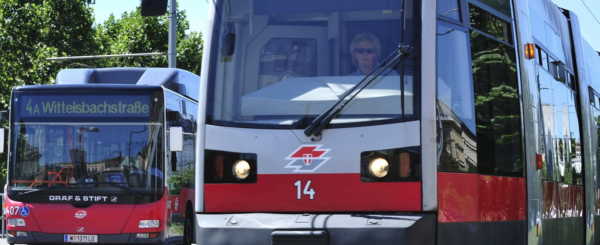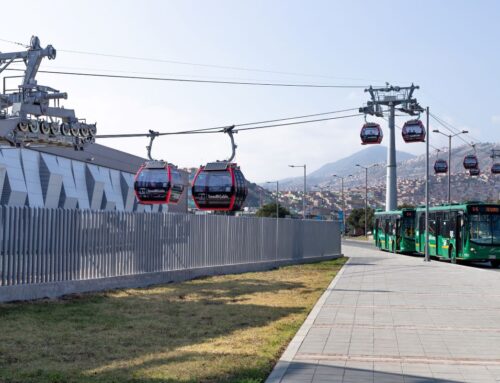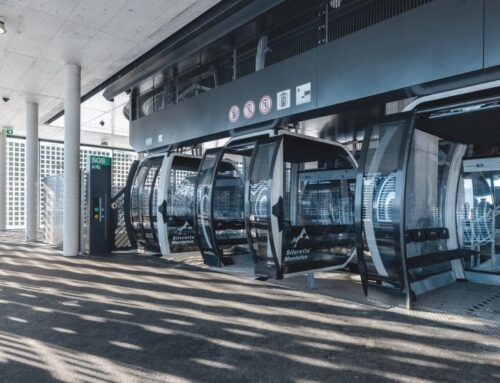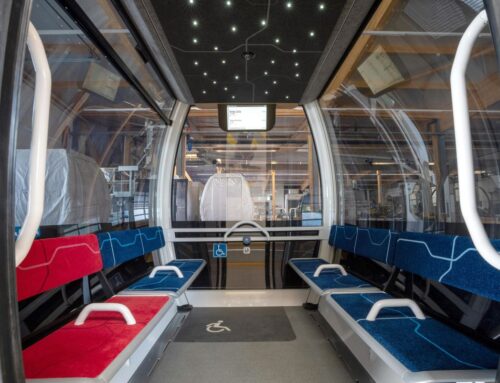
Cities, SI Urban 2/2021, Tourism
Changing behavior – How can we persuade people to switch to public transport?
Behavioural scientist Elisabeth Oberzaucher describes the type of person at the centre of the transport revolution as “homo urbanus”. The University of Vienna scientist knows that the mobility behaviour of city dwellers is generally given little consideration but rather determined by instinct.
“People are energy optimisers. For them to switch to public transport, the car needs to be really out of the way,” Oberzaucher says. Moreover, people do not want to think; the ticketing and transport system therefore needs to be simple and intuitive to use.
“Third: people are creatures of habit and risk-averse; they always find a tried and tested means of transport ‘better’ than an experiment,” the researcher notes. However, the coronavirus crisis and its watersheds could be a unique opportunity to change mobility behaviour.
Smart mobility ticketing can persuade people to switch to public transport. Photo: FAIRTQ

Storytelling instead of bans
Push and pull remedies are required in equal measure here, according to Oberzaucher: “It won’t work without applying pressure and raising awareness. The benefits of local public transport needs to be clear, so that people will change their mobility behaviour.” Through children especially – and with adult relatives – a lot can be achieved with play, fun and prizes.
By contrast, compulsion is a poor adviser. “Bans on car driving work quickly but not sustainably. It is better to use storytelling that convinces people,” the behavioural scientist says. Learning by doing is always better than learning by teaching.
Wiener Linien hopes to change people’s mobility behaviour with demand-based frequency. Photo: Wiener Linien

Installing app, changing behaviour
This “learning by doing” can be achieved for example through smart mobility ticketing. As What passengers actually want is not to buy a ticket but rather simply to travel; they see buying a ticket as a necessary and often highly complex evil.
Consequently, intelligent systems are needed, which deal with the complexity for themselves – and do not pass it on to passengers. Manufacturers such as FAIRTQ and HACON offer ticket solutions that stand out for their simplicity, targeted digital marketing, third-party financing and new pricing mechanisms.
The check-in/check-out apps specifically combine a customer- friendly, intuitive user interface with smart algorithms that make buying a ticket much easier. “Their simple use means that passengers can travel easily, with no prior knowledge of local fares and zones,” Gian-Mattia Schucan, CEO of FAIRTQ, reports.
On their smartphone, passengers click Start at the start and Stop at the end of their journey. Location data are collected during the trip. If passengers forget to check out, the app reminds them and filters out parts of the journey that are not on public transport.
“The automatic best-price system always calculates the optimal fare combination, and passengers no longer need to worry about having the right ticket,” Schucan says. He believes that, on the basis of the user friendliness, 40 percent of app users would use public transport more often.
Further triggers
This is achieved not least through transparent, proactive information. “Customers are automatically sent data on vehicle occupancy, correct choice of routes, disruption and other notifications, rather than having to search for the information for themselves,” HACON Account Manager Sohejl Wanjani explains. The app enables passengers to make reliable and smart decisions.
Another important role is the one played by geofencing. Here, advertising for promotional tickets is shown on the basis of time and location, for example to persuade people to use the mode of transport at off-peak times.
“If passengers check in during a set time window, they automatically receive a discount,” Schucan says. Third-party financing is also possible, for example so that companies buy tickets for their staff–afurthertriggerforpeopleto change their mobility behaviour.
Offer design
For smart mobility ticketing to have an impact, the service needs to be right; without an attractive offer, even easy ticket purchasing with a simple price structure will not bring in the passengers. “Furthermore, using public transport is not a question of price: a fare reduction is not critical to the switch away from the car,” Günther Steinbauer is convinced.
The boss of Wiener Linien sees offer design as the key to changing mobility behaviour. In the Austrian capital, his company operates one of the world’s most efficient public transport networks. “Our frequency is based not on time but rather on demand,” Steinbauer summarises the strategy.
Moreover, the connections are optimised according to prioritised transfer links and the provision is aligned with events. “During rush hour, calculated vehicle occupancy should be no higher than 65 percent. We employ relief routes to achieve this,” Steinbauer explains.
By contrast, a basic service is offered at off-peak times and at the weekend. “The nearest stop is no more than 500 metres away and minimum standards are guaranteed when it comes to frequency,” the Wiener Linien boss says.
His conclusion: For a real change in the mobility behaviour of “homo urbanus”, public transport needs to be reliable, punctual, fast, comfortable and frequent. ts







